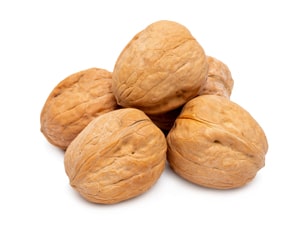It’s Movember this month which means men’s health is on the brain! Let’s start by talking about the prostate.
What is a prostate?

What does the prostate gland do?
The prostate gland has 3 basic functions:
- Excretion – The prostate gland is important for providing part of the nutrients and lubrication in semen. Although, the majority of the fluid in semen comes from the seminal vesicles, the prostatic fluid is still really important. It contributes an alkaline clear to white, watery fluid that contains enzymes, prostate specific antigen, citric acid, zinc and lipids.
- Hormones – In addition to excreting fluids to the outside world, the prostate has some hormone processing and secreting action for inside the body. The most important function would be turning testosterone into a more potent androgen called dihydrotestosterone (DHT). DHT is about 2.5x more potent than testosterone at binding to its receptor and plays a very important role for a majority of male characteristics.
- Control Switch – There is a good reason why the prostate is located where it is, so removing it when it is acting up isn’t the first choice. The prostate acts like a physical control switch to regulate fluids that are traveling through the urethra. If we didn’t have it, men could urinate and ejaculating at the same time. In severe prostate cancer, they can do radical prostatectomy which leads to permanent incontinence and an inability to ejaculate.
What Can I do to keep my Prostate healthy?
Keeping your prostate healthy is easy. Here are a couple tips to incorporate into your everyday lifestyle
1. Eat a diet full of fresh fruits and veggies
So, if you are meat and potatoes guy… it’s time to adapt. If you look at any prostate support formulas, they will almost all contain extracts from fruits and veggies including tomatoes, pumpkin seeds, carrots, and soy because they are rich in trace minerals, healthy fats and great antioxidants.
There is a phrase we learnt in naturopathic medical school – “zinc for the dink”, but it’s also zinc for the prostate. Getting adequate trace minerals is very important for prostate function. Not just zinc but selenium, magnesium, and iron. These minerals are all found in adequate amounts in fruits, vegetables and nuts.
2. Avoiding heavy metals
I don’t want to sound too “naturopathic” but heavy metals may become sequestered in the prostate and deplete important antioxidants. Mercury and Lead can replace important minerals like selenium and zinc. If you work in an industrial setting with lots of chemicals, fumes or pollutants, you may want to consider a detox and make sure you are wearing all your personal protective equipment.
3. Get moving!
Studies have demonstrated that exercise can reduce the incidence of prostate cancer as well as the symptoms of prostatitis and benign prostatic hyperplasia (BPH – a non-cancerous enlargement of the prostate).
How do I know if there is an issue?
If you experience any of the following issues, consider talking with your doctor.
- Difficulty starting or stopping urination
- Pain or burning while urinating
- Urinary urgency or frequency
- Bleeding
- Incontinence (leaking)
- Ejaculatory problems
- Low back pain
- Swollen lymph nodes in the groin or legs
- Pain with defecation
For more information or to create a solid plan to prevent prostate issues, talk to a naturopathic doctor that is well versed in men’s health including Dr. Kyle Maynard at Horizons Holistic Health Clinic.
Disclaimer: This information is provided for educational purposes only. Please consult a medical practitioner regarding the applicability of any opinions or recommendations with respect to your symptoms or medical conditions.



